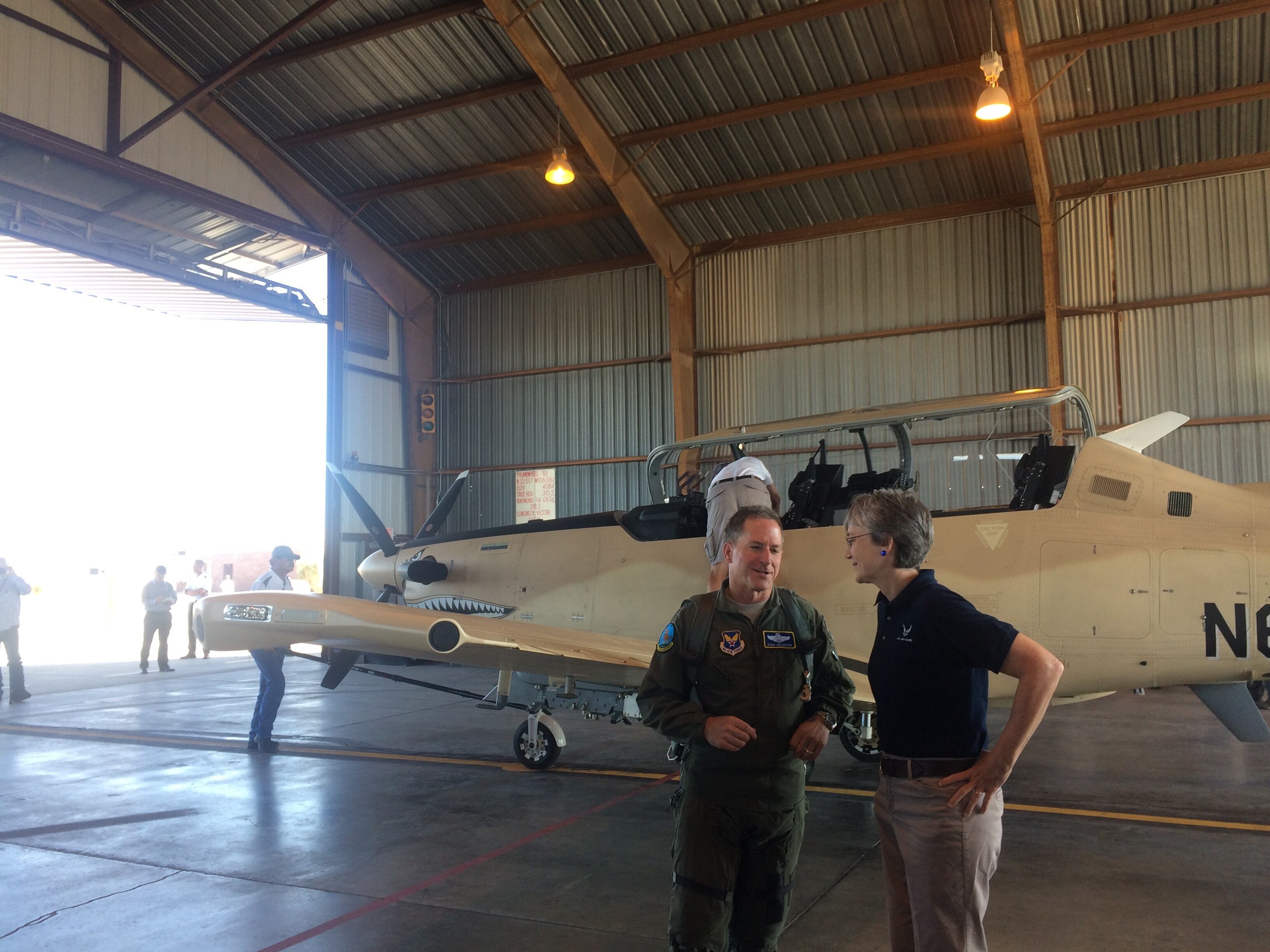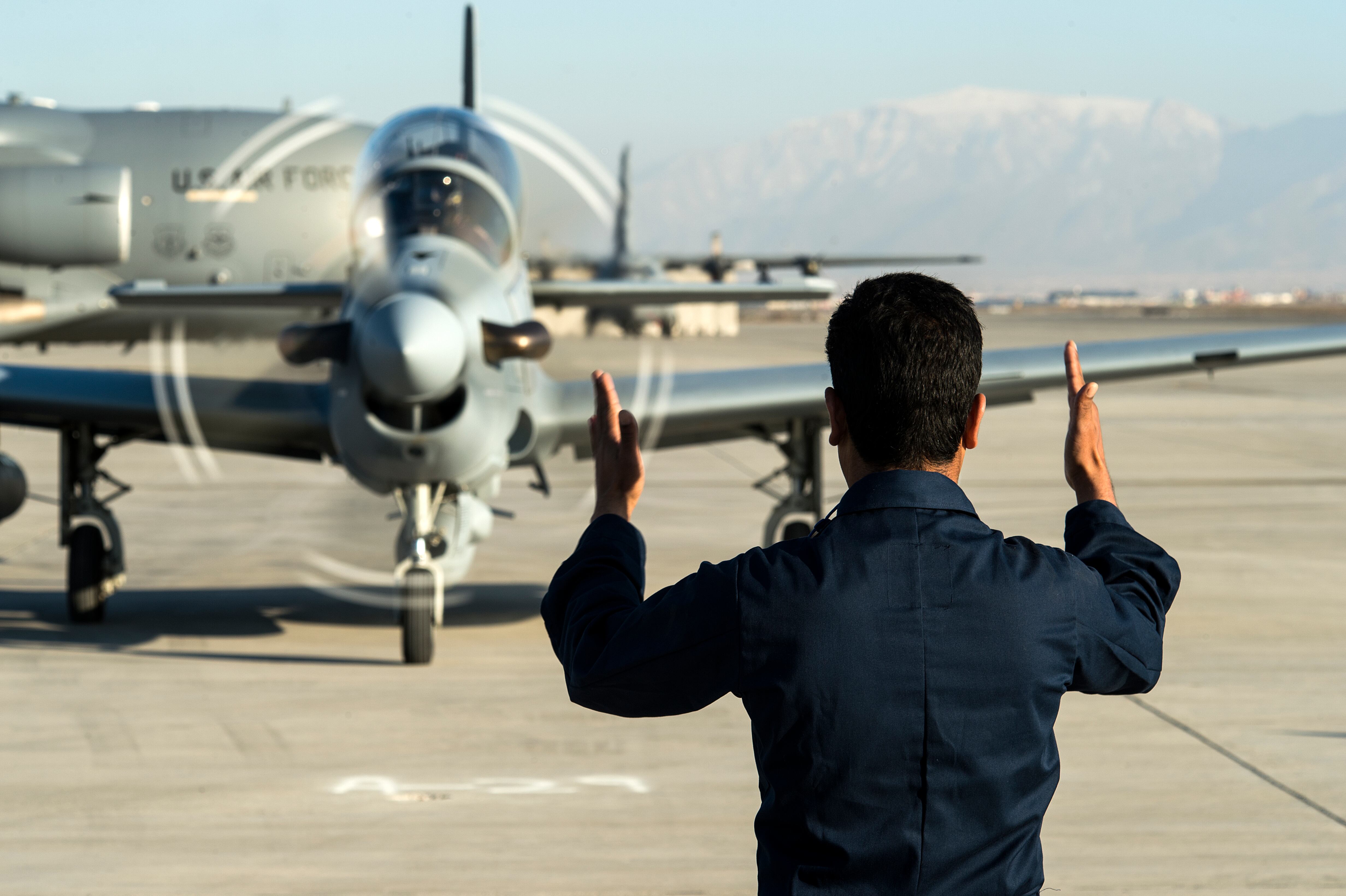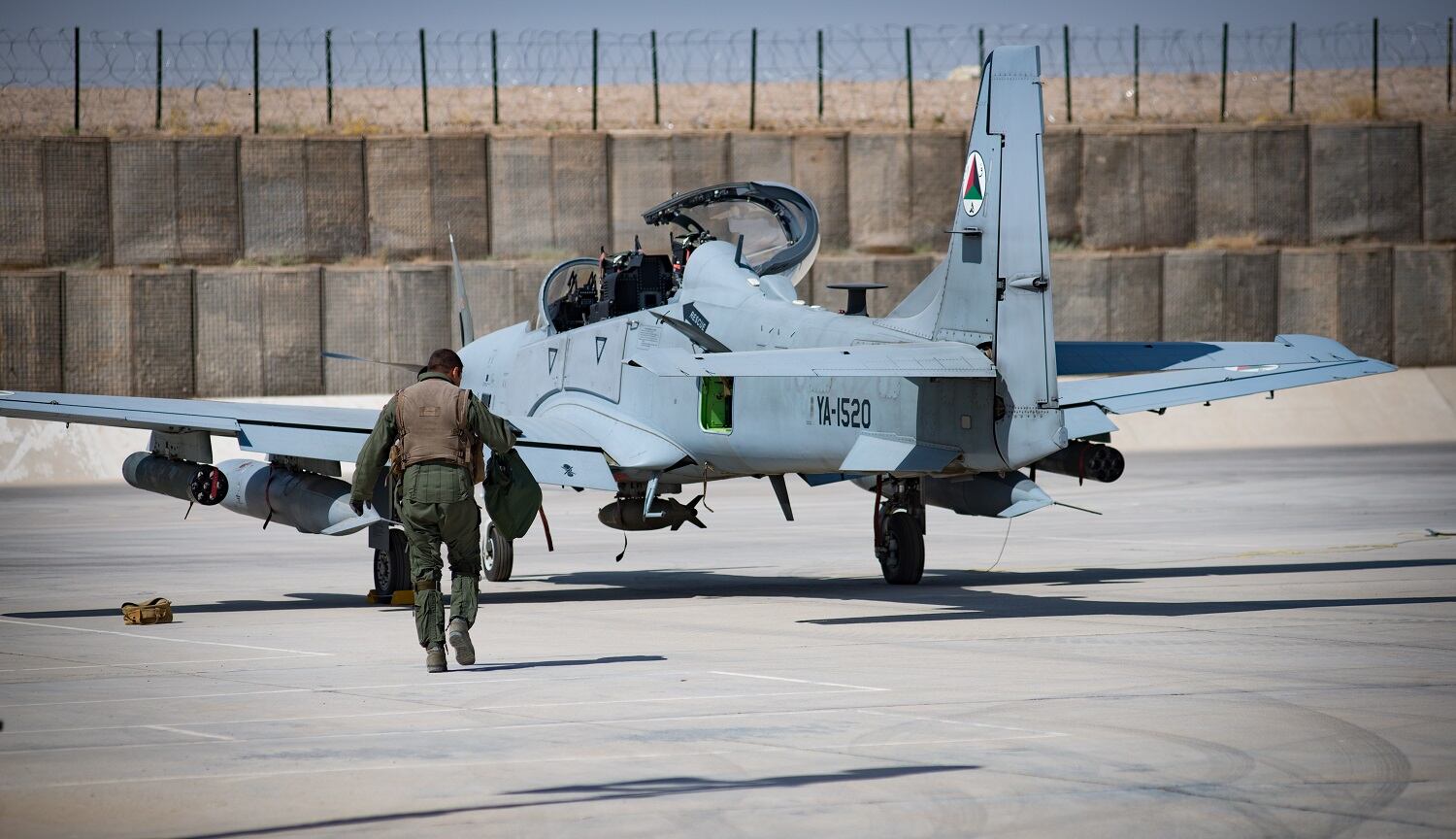WASHINGTON — The U.S. Air Force recently ordered another six A-29 Super Tucanos for the Afghan Air Force, a positive sign for future sales as U.S. and Middle Eastern air forces note an increased interest in low-cost light attack planes.
The latest order, announced by U.S. prime contractor Sierra Nevada Corporation and manufacturer Embraer on Oct. 25, brings up the number of A-29 aircraft ordered by the U.S. Air Force on behalf of foreign nations to 32 planes. SNC has delivered 20 aircraft to Afghanistan and two of six to Lebanon through the U.S. program.
RELATED

According to an Air Force spokesman, the $174.5 million contract provides for six additional aircraft as well as for long-lead parts, maintenance spares and transportation to training locations.
Over the past year, the A-29 has established a small but comfortable foothold in the Middle East with signs that its footprint could expand in the coming years. The aircraft has been operational in Afghanistan since early 2016.
During a recent experiment at Holloman Air Force Base, New Mexico, the U.S. Air Force operated the A-29 ahead of a probable combat demonstration in the region for next year. The United Arab Emirates, which has a stated requirement for light attack aircraft, sent military officials to Holloman for the event.
RELATED

“I think the market is very robust and continuing to expand,” said Taco Gilbert, senior vice president for SNC’s intelligence, surveillance and reconnaissance business. However when asked what countries seemed most promising for sales, he demurred.
“I can’t tell you all of the people that we’re talking to right now, but I can tell you that there is a lot of interest in the aircraft,” he said.
Like most other major aerospace companies, SNC and Embraer will be at the Dubai Airshow hoping to stoke interest from new customers. Although the A-29 itself will not be featured at the show, some of its competitors —including the Air Tractor AT-802U and IOMAX Archangel — will be on static display.
While Middle Eastern nations have historically invested in relatively high-end fighter capabilities, Gilbert said, nations dealing with counterinsurgency organizations can actually benefit by operating a cheaper, slower platform like the A-29 that allows pilots to fly low and slow over targets.
“Nations that have been flying high performance aircraft for a long time are learning — unfortunately sometimes the hard way, by getting frustrated — that these high-performance aircraft are not the best asset for all missions,” Gilbert said.
“In a permissive or semipermissive environment, they are not the best asset. Not only are they too expensive, but the capabilities that make them so effective in a high-end war actually are detrimental in a counterinsurgency operation,” he said. “They move too fast to pick out targets. The visibility is too poor. They’re too expensive to operate, they’re more limited in the airfields from which they can operate. So people are learning that a turboprop aircraft like the A-29 — and particularly the A-29 — is ideally suited. So we’re seeing more and more interest across the Middle East and quite frankly across the globe.”
The A-29 has flown more than 320,000 flight hours and 40,000 combat hours, and can be modified to carry more than 150 configurations of electro-optical/infrared equipment, laser designators, and communications gear. Operating costs amount to about $1,000 per flight hour compared to upward of $20,000 for a fighter jet, he said.
Production of the latest six aircraft for the Afghan Air Force is set to start immediately in Jacksonville, Florida, SNC and Embraer stated in a joint news release.
The new A-29 order for Afghanistan comes on the heels of an August approval by the U.S. to sell 12 A-29s to Nigeria as part of a $593 million Foreign Military Sales package. Gilbert said the U.S. government is working on its letter of offer and acceptance that will solidify final terms of a deal between it and Nigeria.
RELATED

In early October, Embraer announced a deal for six Super Tucanos, which will be produced in Brazil for an undisclosed customer.
The U.S. Air Force is also considering buying several hundred light attack aircraft that would enable cheaper operations in the Middle East and help create new pilots. The service has not yet decided whether to move forward with a combat demonstration in the region, but officials had said the A-29 and Textron’s AT-6 Wolverine would likely be the aircraft chosen to participate.
“The Air Force has been in constant communication, but I don’t think they really know what’s going to happen yet,” Gilbert said. “They communicated a desire to go forward, but I know they — just like everyone else in the government — are somewhat limited by finances. So, they’re trying to come up with the funding or a means to secure the funding from Congress.”
Valerie Insinna is Defense News' air warfare reporter. She previously worked the Navy/congressional beats for Defense Daily, which followed almost three years as a staff writer for National Defense Magazine. Prior to that, she worked as an editorial assistant for the Tokyo Shimbun’s Washington bureau.








